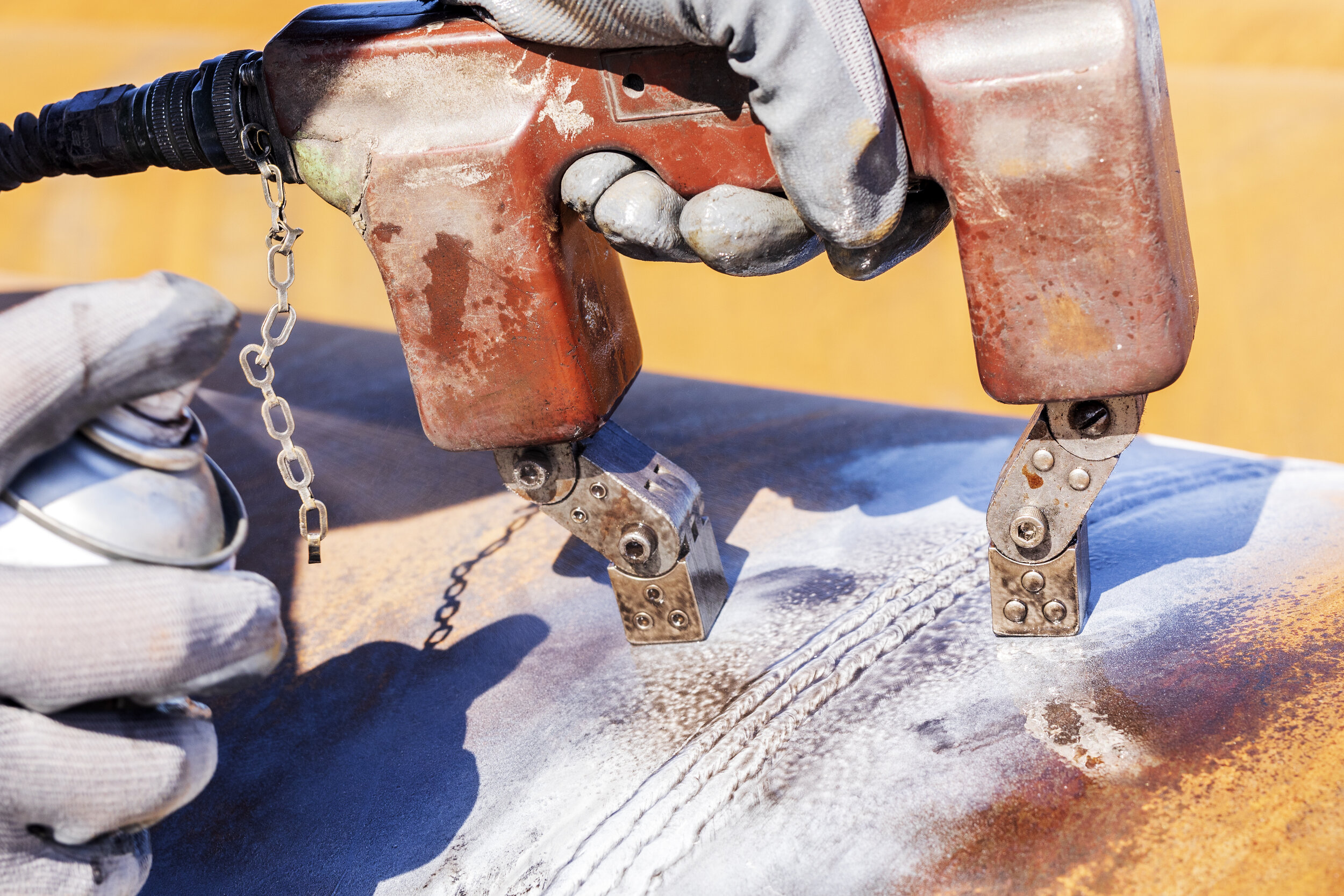How Does Magnetic Particle Testing Work?
The effectiveness of MT lies in a simple yet elegant principle: magnetic flux leakage.
First, a powerful magnetic field is temporarily induced into the part being inspected. This field flows through the material like a current. When the magnetic field is undisturbed, it remains almost entirely inside the part.
However, if the field encounters a discontinuity—such as a crack, a lap, or a seam—it cannot bridge the gap. The magnetic flux is forced to detour and "leak" out of the material's surface at the location of the flaw. This leakage field creates a pair of localized magnetic poles (North and South) at the defect site.
Next, fine ferromagnetic particles (essentially tiny iron filings) are applied to the surface. These particles are drawn to the magnetic flux leakage, accumulating directly over the flaw and forming a visible indication. This indication provides a clear visual map of a defect that would otherwise be invisible to the naked eye.
Key Concepts in Magnetic Particle Testing
A successful MT inspection depends on choosing the right technique for the part and the suspected flaw type. This involves understanding magnetization methods, current types, and particle selection.
Magnetization Methods
The orientation of the magnetic field relative to the flaw is critical. Maximum sensitivity is achieved when the magnetic field lines intersect the flaw at a 90-degree angle.
- Longitudinal Magnetization: The magnetic field runs parallel to the long axis of the component. This is typically done by placing the part inside a coil. This method is best for detecting transverse (crosswise) flaws.
- Circular Magnetization: The magnetic field flows in a circular path around the circumference of the component. This is achieved by passing an electrical current directly through the part (headshot) or through a conductor placed inside it (central conductor). This method is best for detecting longitudinal (lengthwise) flaws.
Because a single magnetization will only detect flaws oriented perpendicular to it, parts often require inspection in two directions to ensure complete coverage.
Current Types: AC vs. DC
- Alternating Current (AC): AC creates a magnetic field that is concentrated at the surface of the material due to a phenomenon called the "skin effect." This makes AC highly sensitive for detecting flaws that are open to the surface, like fatigue cracks.
- Direct Current (DC): DC (including half-wave rectified DC) creates a magnetic field that penetrates deeper into the material. This gives DC the advantage of being able to detect both surface and shallow subsurface flaws.
Particle Types
The choice of particles depends on the surface condition, required sensitivity, and inspection environment.
- Dry Particles: Applied as a fine, dry powder. They are excellent for rough surfaces like castings and forgings and are highly portable for field inspections. They are typically available in various colors (grey, red, yellow) to provide good contrast against the test piece.
- Wet Particles: Fine particles are suspended in a liquid carrier (oil or water). They offer superior mobility on the surface, making them ideal for detecting very fine discontinuities.
- Visible Wet Particles: Use dark-colored particles (usually black) suspended in a white contrast paint background for easy viewing in normal light.
- Fluorescent Wet Particles: These particles are treated with a fluorescent dye that glows brilliantly under an ultraviolet (UV-A) "black light." This is the most sensitive form of MT, capable of revealing extremely fine, tight cracks.
Advantages and Limitations of MT
Advantages
- High Sensitivity: Exceptionally good at detecting fine, shallow surface-breaking cracks.
- Rapid and Straightforward: Inspections are fast, and indications appear instantly, allowing for immediate evaluation.
- Cost-Effective: Equipment and consumable costs are generally lower than many other NDT methods.
- Portable: Yoke and coil equipment can be easily transported for on-site inspections in the field or on large structures.
- Versatile Application: Can be used on complex shapes and large or small components, as long as they are ferromagnetic.
Limitations
- Only for Ferromagnetic Materials: Cannot be used on materials like aluminum, copper, titanium, or most austenitic stainless steels.
- Surface-Sensitive: Primarily a surface inspection method with limited ability to detect deeply embedded flaws.
- Field Direction is Key: The magnetic field must be oriented correctly to the flaw, often requiring a two-step inspection process.
- Surface Condition is Important: Heavy paint, coatings, or scale can mask defects or prevent particles from forming clear indications, often requiring surface preparation.
- Demagnetization Required: Parts often retain residual magnetism after testing, which may need to be removed in an additional step to prevent interference with subsequent manufacturing processes or in-service performance.





